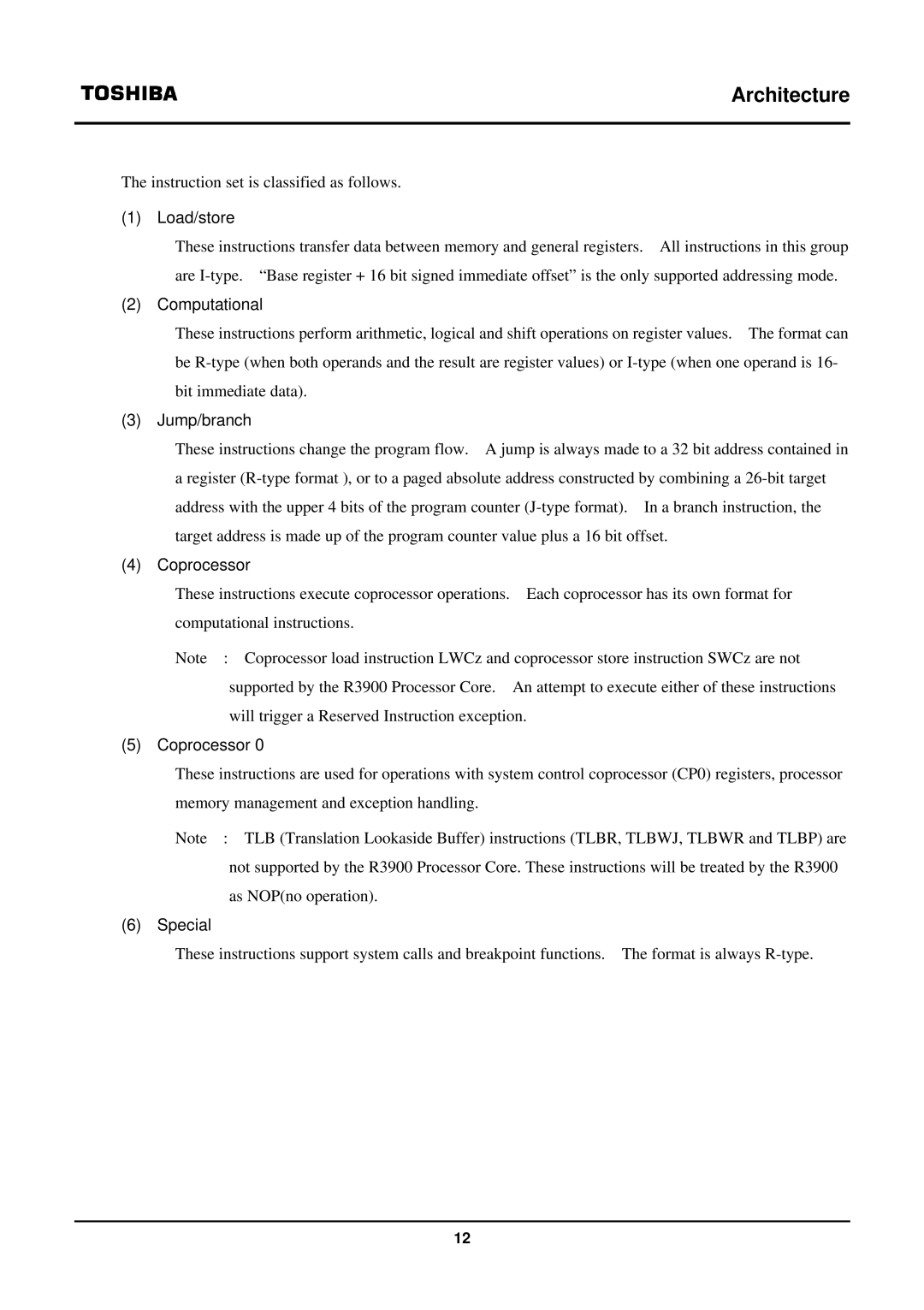
Architecture
The instruction set is classified as follows.
(1) Load/store
These instructions transfer data between memory and general registers. All instructions in this group are
(2) Computational
These instructions perform arithmetic, logical and shift operations on register values. The format can be
(3) Jump/branch
These instructions change the program flow. A jump is always made to a 32 bit address contained in a register
(4) Coprocessor
These instructions execute coprocessor operations. Each coprocessor has its own format for computational instructions.
Note : Coprocessor load instruction LWCz and coprocessor store instruction SWCz are not supported by the R3900 Processor Core. An attempt to execute either of these instructions will trigger a Reserved Instruction exception.
(5) Coprocessor 0
These instructions are used for operations with system control coprocessor (CP0) registers, processor memory management and exception handling.
Note : TLB (Translation Lookaside Buffer) instructions (TLBR, TLBWJ, TLBWR and TLBP) are not supported by the R3900 Processor Core. These instructions will be treated by the R3900 as NOP(no operation).
(6) Special
These instructions support system calls and breakpoint functions. The format is always
12
